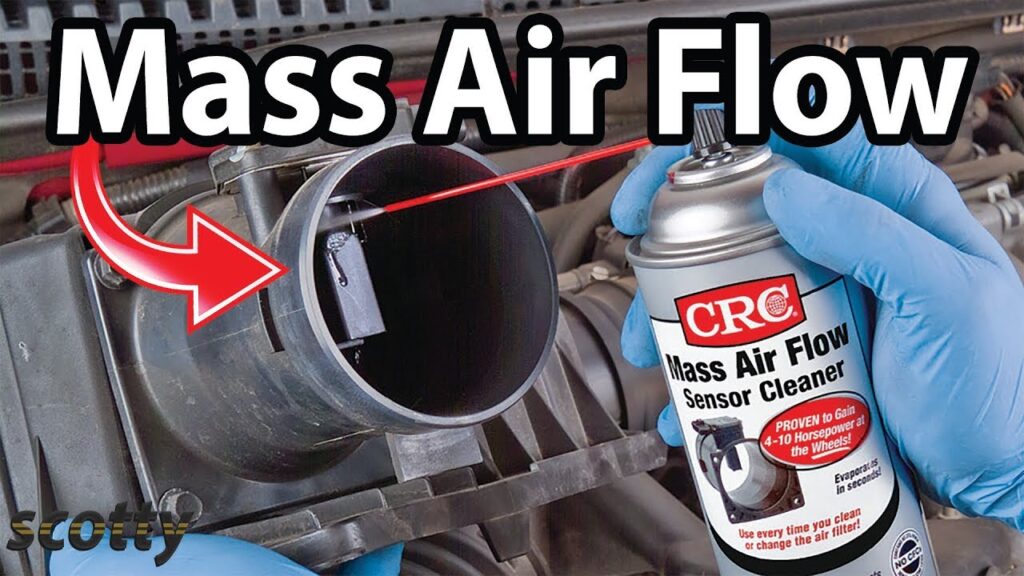Cleaning the Mass Air Flow (MAF) sensor is an essential maintenance task for vehicle owners, particularly those who want to ensure optimal engine performance and fuel efficiency. The MAF sensor plays a critical role in measuring the amount of air entering the engine, which is crucial for the proper air-fuel mixture. Over time, the sensor can become dirty, leading to various performance issues. This comprehensive guide will detail how to clean a MAF sensor, the tools required, and the benefits of regular maintenance.
Understanding the MAF Sensor
What is a MAF Sensor?
The Mass Air Flow sensor is an integral part of a vehicle’s engine management system. It measures the volume and density of the air entering the engine, allowing the Engine Control Unit (ECU) to calculate the correct amount of fuel to inject. This measurement is vital for maintaining optimal engine performance, fuel efficiency, and emissions control.
Importance of the MAF Sensor
A clean MAF sensor is essential for several reasons:
- Engine Performance: A dirty MAF sensor can lead to poor engine performance, including rough idling, stalling, and hesitation during acceleration.
- Fuel Efficiency: An accurate measurement of the air entering the engine ensures the correct air-fuel mixture, which is crucial for fuel efficiency. A dirty sensor can result in a rich or lean mixture, leading to increased fuel consumption.
- Emissions Control: Proper functioning of the MAF sensor helps maintain compliance with emissions regulations by ensuring the engine operates efficiently.
Signs of a Dirty MAF Sensor
Before cleaning the MAF sensor, it’s important to recognize the signs that indicate it may be dirty:
- Reduced Engine Performance: Sluggish acceleration or decreased power can signal a dirty MAF sensor.
- Rough Idle or Stalling: If the engine idles roughly or stalls unexpectedly, the MAF sensor may be contributing to the issue.
- Check Engine Light: A dirty or malfunctioning MAF sensor can trigger the Check Engine Light (CEL). Diagnostic trouble codes (DTCs) such as P0100, P0101, P0102, P0103, and P0104 may appear.
- Poor Fuel Economy: If you notice a significant drop in fuel efficiency, it could be due to a dirty MAF sensor affecting the air-fuel mixture.
Tools and Materials Needed
To clean the MAF sensor effectively, gather the following tools and materials:
| Tool/Material | Purpose |
|---|---|
| MAF Sensor Cleaner | Specialized cleaner for MAF sensors |
| Isopropyl Alcohol | Alternative cleaning solution |
| Soft Brush | For gentle cleaning of the sensor |
| Cotton Swabs | To reach small areas and apply cleaner |
| Clean Cloth | For wiping and drying the sensor |
| Wrench | To remove the MAF sensor from the intake |
| Flat Nose Pliers | To assist in sensor removal |
| Safety Glasses | To protect eyes during cleaning |
| Gloves | To keep hands clean and safe |
Step-by-Step Guide to Cleaning the MAF Sensor
Step 1: Preparation
- Ensure Safety: Before starting, make sure the engine is turned off and cool to prevent burns. Wear safety glasses and gloves for protection.
- Locate the MAF Sensor: The MAF sensor is usually located between the air filter and the throttle body. Refer to your vehicle’s manual for the exact location.
Step 2: Remove the MAF Sensor
- Disconnect the Battery: To avoid electrical shock, disconnect the negative terminal of the battery.
- Unplug the MAF Sensor: Carefully disconnect the electrical connector from the MAF sensor. Press the release tab and pull the connector away.
- Remove the Sensor: Using a wrench or flat nose pliers, unscrew the MAF sensor from its housing. Be cautious not to damage any surrounding components.
Step 3: Cleaning the MAF Sensor
- Inspect the Sensor: Before cleaning, visually inspect the sensor for any obvious damage or excessive dirt.
- Apply Cleaner: If using MAF sensor cleaner, hold the can about 6 inches away from the sensor and spray 10 to 15 spurts directly onto the sensor’s hot wire or plate. Avoid touching the sensor with the cleaner straw or any other object.
- Use Isopropyl Alcohol: If MAF sensor cleaner is unavailable, moisten a cotton swab or soft brush with isopropyl alcohol. Gently clean the sensor’s components without scrubbing or applying excessive pressure.
- Allow to Dry: After cleaning, let the sensor air dry completely. Do not use any external heat sources to speed up the drying process.
Step 4: Reinstall the MAF Sensor
- Reattach the Sensor: Once the sensor is dry, carefully reinstall it in the reverse order of removal. Ensure it is securely fastened.
- Reconnect the Electrical Connector: Plug the electrical connector back into the MAF sensor until it clicks into place.
- Reconnect the Battery: Reattach the negative terminal of the battery.
Step 5: Test the Vehicle
- Start the Engine: Turn on the ignition and allow the engine to idle. Observe for any irregularities in performance.
- Check for Warning Lights: Ensure that the Check Engine Light is off. If it remains illuminated, further diagnostics may be necessary.
- Test Drive: Take the vehicle for a short drive to ensure smooth acceleration and overall performance.
How Often Should You Clean the MAF Sensor?
The frequency of cleaning the MAF sensor can vary based on several factors, including:
- Vehicle Make and Model: Different vehicles may have different maintenance schedules.
- Driving Conditions: Frequent driving in dusty or polluted environments may necessitate more frequent cleaning.
- Air Filter Quality: A high-quality air filter can help reduce contaminants reaching the MAF sensor.
As a general guideline, it is recommended to clean the MAF sensor every 30,000 to 50,000 miles (48,000 to 80,000 kilometers). However, always inspect the sensor if you notice any performance issues.
Benefits of Cleaning the MAF Sensor
Regularly cleaning the MAF sensor offers several benefits:
- Improved Engine Performance: A clean sensor ensures accurate air measurement, resulting in better engine performance.
- Enhanced Fuel Efficiency: Maintaining the correct air-fuel mixture can lead to improved fuel economy.
- Reduced Emissions: A properly functioning MAF sensor helps the engine run efficiently, reducing harmful emissions.
- Cost Savings: Cleaning the MAF sensor is a cost-effective alternative to replacement, saving you money on repairs.
FAQ Section
Q1: How do I know if my MAF sensor is dirty?
A1: Signs of a dirty MAF sensor include reduced engine performance, rough idling, stalling, and poor fuel economy. The Check Engine Light may also illuminate.
Q2: Can I use any cleaner to clean the MAF sensor?
A2: No, it is essential to use a cleaner specifically designed for MAF sensors. Other cleaners, such as brake cleaner, can leave residue and damage the sensor.
Q3: How often should I clean my MAF sensor?
A3: It is generally recommended to clean the MAF sensor every 30,000 to 50,000 miles, but inspect it more frequently if you notice performance issues.
Q4: What should I do if the Check Engine Light remains on after cleaning?
A4: If the Check Engine Light stays on, further diagnostics may be necessary, as the MAF sensor could be faulty or other issues may exist.
Q5: Is cleaning the MAF sensor a difficult task?
A5: No, cleaning the MAF sensor is a relatively straightforward task that can be completed with basic tools and some care.
Conclusion
Cleaning the Mass Air Flow sensor is a vital maintenance task that can significantly impact your vehicle’s performance and fuel efficiency. By following the steps outlined in this guide, you can effectively clean the MAF sensor and ensure your engine runs smoothly. Regular maintenance not only helps avoid costly repairs but also contributes to a more efficient and environmentally friendly vehicle.For more detailed information on vehicle maintenance and the MAF sensor, you can refer to the Wikipedia page on Mass Air Flow Sensors here.



